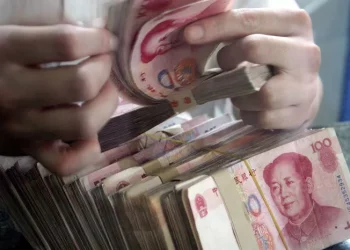The peso is one of the most recognized currencies in the world, widely used across Latin America and the Philippines. While today it is primarily associated with countries like Mexico, Argentina, and the Philippines, the peso’s origins trace back to the Spanish Empire. In this article, we will explore the history of the peso, its earliest forms, and how it evolved into the modern currencies we see today.
The Birth of the Peso: Spanish Colonial Influence
The term “peso” originates from the Spanish word for “weight,” which was used to describe silver and gold coinage. The history of the peso is deeply tied to the Spanish dollar, also known as the “pieces of eight” (real de a ocho), which became one of the first globally recognized currencies.
In the early 16th century, Spain established a vast colonial empire that spanned across the Americas and Asia. To facilitate trade and economic stability, Spain began minting silver coins, which eventually became the foundation for the peso. The Spanish dollar was minted primarily from silver extracted from rich mines in Mexico, Peru, and Bolivia, and it was widely used in international trade, even influencing the early monetary systems of the United States and China.
The First Pesos: Spanish America’s Monetary System
The earliest recognized form of the peso emerged in the late 15th and early 16th centuries as the Spanish real, a silver-based currency. Over time, the most commonly used coin was the 8-reales coin, which became known as the peso. This coin was heavily circulated throughout Spain’s colonies, leading to its adoption in Latin America and the Philippines.
In 1732, Spain began officially minting pesos with a standardized weight and silver content. These coins were widely accepted across the world and played a crucial role in international trade. Many countries that later adopted the peso as their national currency based their monetary systems on these early Spanish coins.
The Evolution of the Peso in Latin America
Following the wars of independence in the early 19th century, many Latin American nations sought to establish their own financial systems. While they broke away from Spanish rule, they retained the peso as their primary currency, often redesigning it to reflect their newfound sovereignty.
Mexico
Mexico was one of the first countries to establish its own peso following its independence from Spain in 1821. The Mexican peso was initially based on the Spanish dollar system but evolved into a distinct currency over time. Today, the Mexican peso (MXN) is one of the most traded currencies in the world.
Argentina
Argentina adopted the peso in 1826 as its official currency. Over the years, Argentina’s peso has undergone several redenominations and changes due to economic instability, inflation, and financial crises. Despite these challenges, the peso remains the official currency of Argentina today.
Chile, Colombia, and Other Latin American Nations
Many other Latin American countries also retained the peso as their currency after gaining independence from Spain. Each country introduced unique designs and denominations, but the peso remained a unifying symbol of economic identity across the region.
The Peso in the Philippines: A Unique Evolution
The Philippines, a former Spanish colony in Asia, also adopted the peso as its primary currency. Spanish influence led to the introduction of the peso in the 16th century, and it remained in use even after Spain ceded control to the United States in 1898. The modern Philippine peso (PHP) continues to be the country’s official currency, though it has undergone significant changes since its early days.
The Impact of the Peso on Global Trade
The peso, particularly the Spanish dollar, played a significant role in shaping global trade during the colonial period. The silver peso was one of the first truly global currencies, used for trade in Europe, the Americas, and Asia. Even the Chinese monetary system adopted the peso, with merchants accepting it as a reliable form of payment due to its high silver content.
Additionally, the peso influenced the development of several other currencies, including the U.S. dollar. The familiar “$” symbol, commonly associated with the dollar, is believed to have been derived from the Spanish peso’s mark.
The Peso’s Modern-Day Legacy
Today, the peso continues to be a key currency in multiple countries. The Mexican peso, in particular, remains one of the most stable and widely traded currencies in the global foreign exchange market. Similarly, the Philippine peso continues to serve as the backbone of the Philippine economy.
Despite economic fluctuations in countries like Argentina and Venezuela, where inflation has significantly impacted the value of the peso, the currency remains a significant part of their national identity and financial systems.
Conclusion
The peso has one of the richest histories of any currency in the world. Originating from the Spanish Empire’s silver-based economy, it has evolved over centuries to become the official currency in multiple nations. Whether in Mexico, Argentina, Chile, or the Philippines, the peso continues to play a vital role in economic trade and daily transactions.
Understanding the history of the peso not only provides insight into global monetary systems but also highlights how currency can shape nations and economies over time. The legacy of the peso is a testament to the interconnected nature of history, economics, and trade, making it one of the most fascinating currencies in the world.
Related Topics:

























